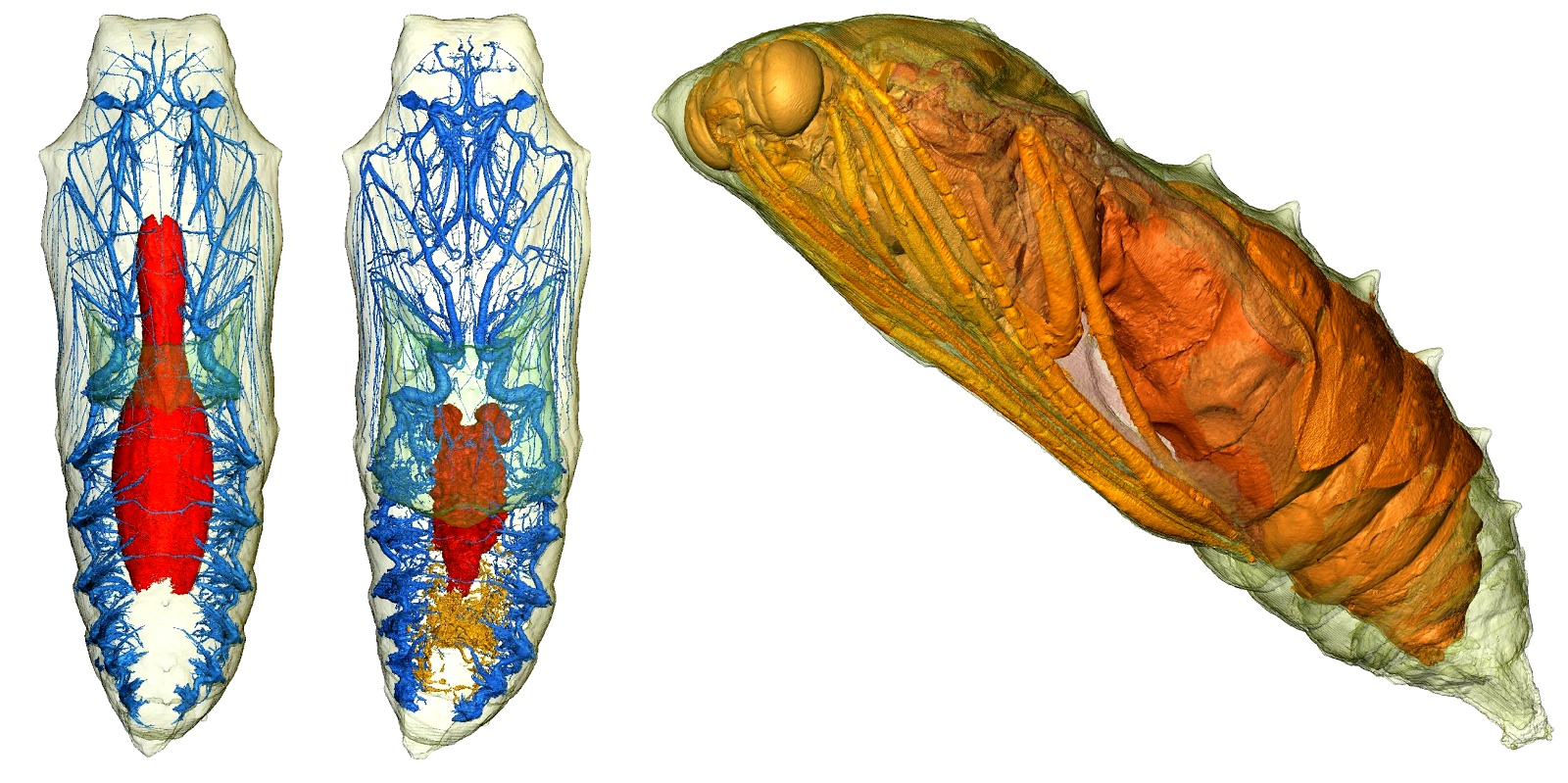
Stunning new pictures of butterfly metamorphosis have been captured using common medical imaging.
The images of the tiny insects, which are described today (May 14) in the Journal of the Royal Society Interface, were taken with a CT scanner that has the resolution to image insects as small as 0.2 inches (5 millimeters).
The new technique could be used to study insect development in place of dissection. Dissection can be a time-consuming, laborious process that requires killing a different specimen for each stage of development. [See the Amazing Caterpillars Morph into Butterflies]
Masters of Earth
Insects make up between 50 percent and 85 percent of the animals on the planet, said study co-author Russell Garwood, a geologist at the University of Manchester in the United Kingdom, who studies fossilized insects.
"To a first approximation, every living thing is an insect, so they're worth understanding," Garwood told LiveScience.
Yet despite insects' prevalence on Earth, most researchers study only a few model organisms, such as the fruit fly Drosophila melanogaster.
Get the world’s most fascinating discoveries delivered straight to your inbox.
Scanning butterflies
To see whether there was a simpler way to study living insects as they developed, the research team used computed tomography (CT) to scan nine Vanessa cardui pupas (the life stage after the caterpillar stage) as they underwent metamorphosis into painted lady butterflies inside a hard outer shell.
The 3D images revealed the fine structure of the pupa anatomy as the insects matured, including the tracheal airways, the antennae and the midgut.
The radiation from the scanning didn't seem to be a problem for the pupas, many of which successfully hatched into butterflies.
The findings suggest the technique could be a viable way to study living insects as they develop.
Insect solutions
The researchers envision several ways to use the new techniques. One possibility is studying how pesticides affect bees' development. Currently, honeybee colonies have seen great declines and some say pesticides may be to blame for this so-called colony collapse disorder; a definitive culprit is still not known.
"Insects are the main pollinators for the majority of our crops," so understanding what causes them to become ill is critically important, Garwood said.
The researchers said they can also see the technique being used in forensics to study flesh-eating maggots that eat decomposing bodies.
Follow Tia Ghose on Twitterand Google+. Follow LiveScience @livescience, Facebook & Google+. Original article on LiveScience.com.

Tia is the editor-in-chief (premium) and was formerly managing editor and senior writer for Live Science. Her work has appeared in Scientific American, Wired.com, Science News and other outlets. She holds a master's degree in bioengineering from the University of Washington, a graduate certificate in science writing from UC Santa Cruz and a bachelor's degree in mechanical engineering from the University of Texas at Austin. Tia was part of a team at the Milwaukee Journal Sentinel that published the Empty Cradles series on preterm births, which won multiple awards, including the 2012 Casey Medal for Meritorious Journalism.


